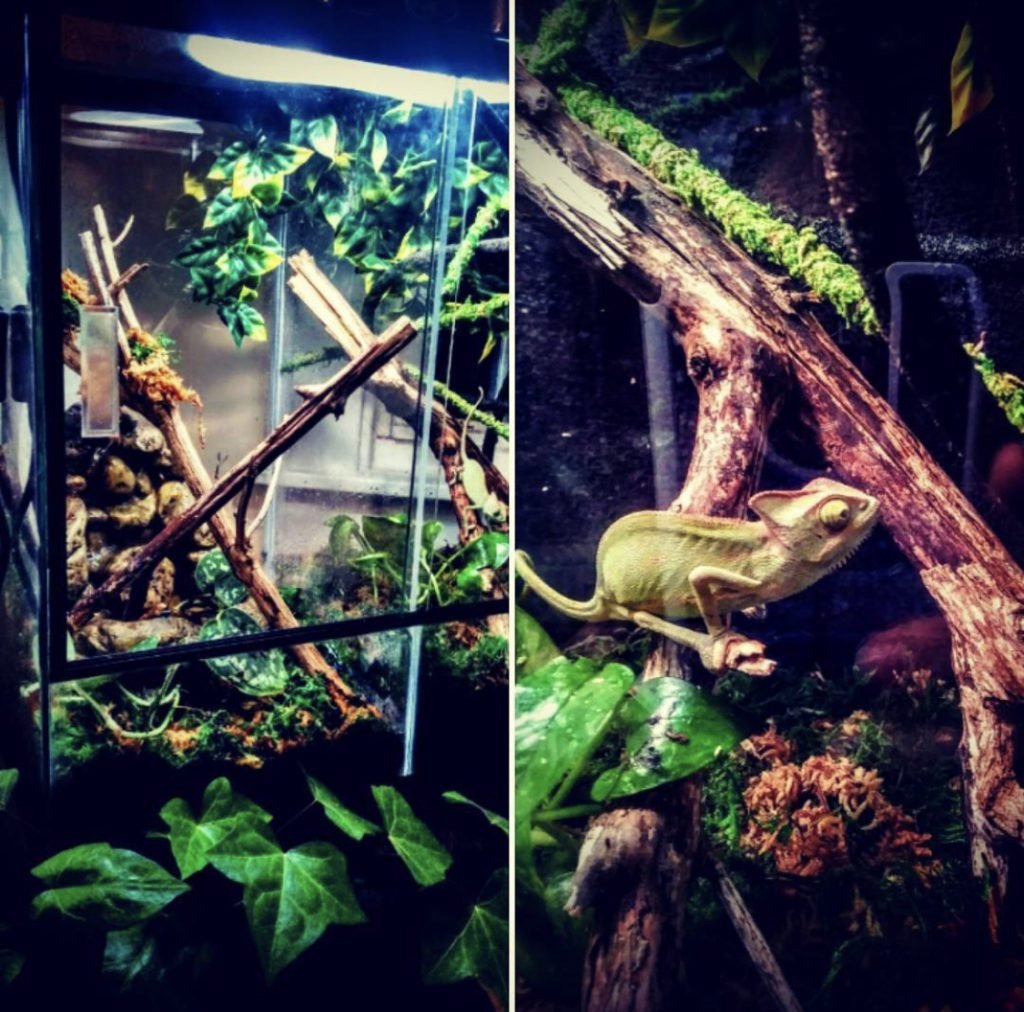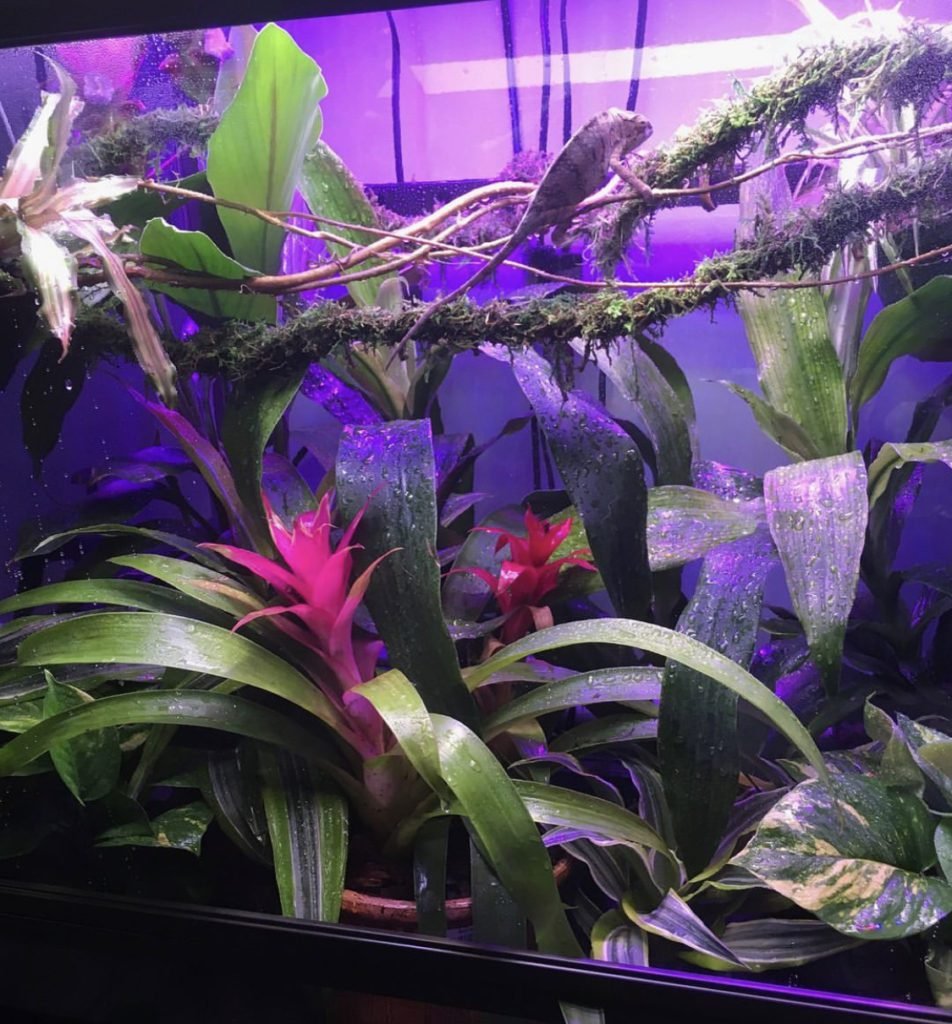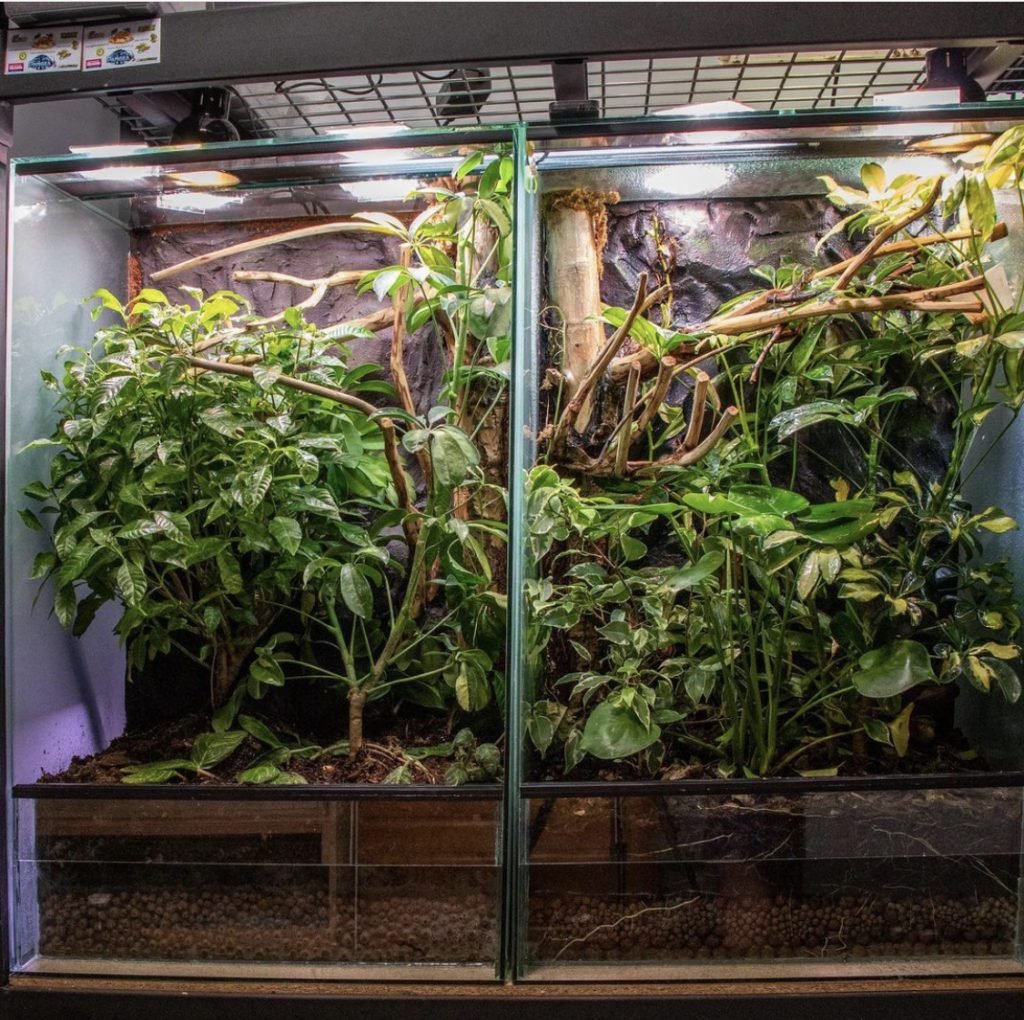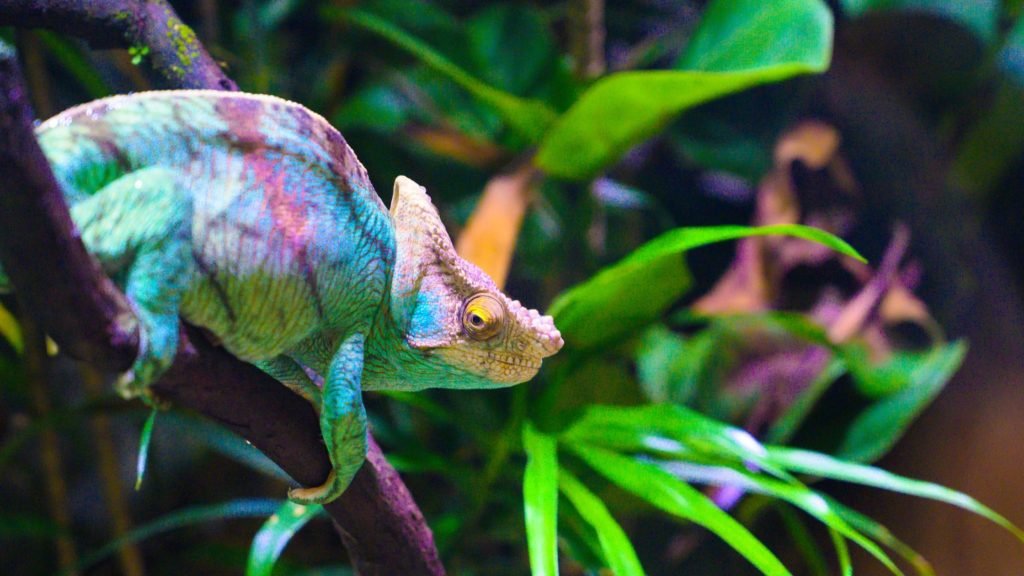Discover the secrets to creating a thriving chameleon habitat. Learn about the ideal terrarium size, lighting, temperature, and more. Ensure your pet chameleon is healthy and happy with our expert tips.
Chameleons have fascinated people for generations. However, individuals interested in keeping chameleons as pets must understand their environmental demands. Chameleons’ unique environments are essential to their preservation. This article will discuss chameleon habitats, from their native settings to the best approach to keep them in captivity. Whether you’re a veteran reptile keeper or just starting, this detailed guide to chameleon habitats will help you keep your pet healthy.
Natural Habitats of Chameleons
The chameleon is a native of Madagascar and Africa, where it has adapted to its natural environment. To give the best care for your pet chameleon, you must first understand the conditions in which they grow and the factors that impact their geographical distribution.
Types of Environments
Chameleons live in various habitats, including woods, deserts, and savannas. Evidence shows they also live in trees and bushes in these areas. Knowing your chameleon’s demands is essential because each species adapts to its environment.
Geographical Distribution
Some chameleon species live in specific zones of Madagascar and Africa. Madagascar has a tropical climate with high temperatures and humidity. The tropical environment of Madagascar makes chameleons thrive.
Ectothermic chameleons have environmental body temperatures. Chameleons can adjust their body temperature in Madagascar’s tropical climate. This reptile needs high humidity to stay healthy because it keeps its skin moist.
Climate and Vegetation
As such, it is essential to provide an environment that mimics the climate and vegetation of their native habitat as closely as possible. Chameleons require trees, plants, and the ideal temperature to live and hunt safely.

Captive Chameleon Habitat
Keeping a chameleon as a pet requires an environment replicating its natural environment. Guaranteeing your pet’s health and happiness by providing a safe and secure environment is possible with a well-designed habitat.
Setting up a Terrarium
The first step in setting up a captive habitat for your chameleon is to choose a suitable terrarium. Terrariums come in various sizes and materials, so it is vital to choose one that is the right size for your pet and provides the right level of ventilation and insulation.
Size and Lighting
The size of your terrarium will depend on the size of your pet and the number of chameleons you are keeping. Giving your adequate pet space to walk around and get sunlight and shade is essential. In terms of lighting, chameleons need access to natural or artificial UVB lighting to help them produce Vitamin D3, which is necessary for their health.
Substrates and Furnishings
Substrate refers to whatever you use to cover the bottom of your terrarium. Coco coir, dirt, and sand are all joint surfaces for chameleons. Furnishing your pet’s space with branches and plants makes it feel more like its natural, safe habitat.
Temperature and Humidity
Your chameleon’s well-being is related to the terrarium’s temperature and humidity. Since chameleons are ectothermic, it is crucial to provide a climate that is as near as possible to their native habitat. That entails keeping the environment between 70- and 80-degrees Fahrenheit with a humidity level between 60 and 70 percent. To keep your pet healthy and happy, check temperature and humidity.
Maintaining Chameleon Habitat
Giving your chameleon a good environment is only the beginning of caring for it effectively. Keeping your pet healthy and happy requires constant attention and a controlling chameleon-closed environment.
Regular Cleaning
Regular cleaning of your chameleon’s terrarium is vital to maintain a healthy and hygienic environment. That includes removing uneaten food, feces, and dead insects and wiping down the enclosure with a mild disinfectant. It is also vital to replace the substrate and furnishings as needed and to wash and sanitize the feeding and drinking dishes.
Feeding and Watering
Feeding and hydration are essential components of a healthy chameleon environment. Chameleons typically eat insects; thus, it is critical to supply a diverse food that contains a variety of insects to provide a balanced diet. To maintain humidity and offer clean drinking water, spray the cage periodically.
Importance of Monitoring Conditions
It is critical to keep an eye on the environment in your chameleon’s terrarium to guarantee they are healthy and happy. Monitoring humidity and temperature levels frequently to maintain a healthy atmosphere. It’s also vital to check your pet’s diet, activity, and health often and seek veterinary care if necessary.
Providing a Stress-free Environment
A stress-free environment is vital to maintaining a healthy chameleon habitat. That includes avoiding handling your pet too frequently, providing plenty of hiding spots, and minimizing changes to the enclosure and routine. Variations in temperature and humidity stress chameleons, Thus, they need a stable habitat.

Challenges in Chameleon Habitat Management
Keeping chameleons as pets may be a wonderful experience, but it can also be challenging. Proper habitat management is critical to the health and well-being of these unique species.
Improper Housing
Inadequate habitat is one of the most challenging aspects of chameleon ecosystem management. Chameleons need precise conditions to thrive, and an incorrect terrarium might cause health issues and discomfort. It is critical to select a terrarium that is the appropriate size and design, as well as one that is safe and escape-proof.
Inadequate Lighting and Temperature
Chameleons require appropriate temperature and lighting conditions to live. Insufficient or incorrect illumination and failing to maintain the optimum temperature range can contribute to health issues and stress. Knowing your chameleon’s lighting and temperature needs and providing the right equipment and settings is crucial.
Lack of Proper Substrate and Furnishings
Lack of proper substrate and furnishings can also challenge chameleon habitat management. Chameleons need a suitable surface to climb and explore, as well as hiding spots and perches to feel secure. Failing to provide these essential elements can lead to stress and health problems. To keep your chameleon healthy and happy, use safe substrates and furnishings and replace them as needed.
Improper Feeding and Watering
Chameleon habitat management challenges include improper feeding and hydration. Chameleons need balanced food and clean water to stay healthy. Research your chameleon’s nutrition and give a variety of healthy food with live insects and clean water.

FAQ about Chameleon Habitat
How big should a chameleon habitat be?
The size of a chameleon habitat will depend on the species, but as a general rule, it should be as large as possible to allow for climbing and exploration.
What kind of lighting do chameleons need?
Chameleons need bright, full-spectrum lighting to provide heat, UVB, and UVA.
What is the ideal temperature for a chameleon habitat?
The ideal temperature for a chameleon habitat will depend on the species, but as a general rule, it should be kept between 70 and 80°F with a basking spot that reaches 90°F.
What sort of substrate should a chameleon habitat have?
The best substrate for a chameleon habitat will depend on the species, but coconut coir, sphagnum moss, and orchid bark can be suitable options.
What type of furniture should need a chameleon habitat?
A chameleon habitat should include hiding spots, perches, and live or fake plants for climbing and exploration.
Is it okay to handle a chameleon frequently?
Handling Chameleons frequently can cause stress. Taking a chameleon outside should be done gently and for short periods.

